Cactus Rot
Prevention, Causes, Identification & Solutions
|
Fungi: Quite often rot is caused by infection from a somehow damaged or weakened part of the plant being infected. Fungi spread by spores, which are everywhere, so there is no preventing teir existence, what we can do best to keep our plants safe from rot is keeping them in good health.
Insects & Invertebrates: Many spineless critters will take a liking to eating tehse plants. Aside from being ugly they generally do not consume entire plants (usually). The danger lies in the open wound they creat and also their waste they leave. Both are open invitations to plant pathogens.
Excessive moisture: Some cacti are well adapted to high humidity and lots of water, the majority, however, are not. Too much water for cacti is not unlike wearing a wet sock for days on end, you will get rashes or worse, as will cacti which is essentially rot.
Rapid Growth: Growing plants super fast via overwatering/fertilizingand/or grafting generally results in bloated plants. Because these plants generally are so water fill and skin not as thick as normal,they are more easily affected by pathogens. Once a really bloated plant gets rot, it spreads quite a bit more quickly. You also run risks of splitting the plants, which leave a nice open target sign for nasties.
Physical damage: Like insects eating the plants, if we drop, cut poke etc our plants they generally suffer from it. Cacti are realtively touhg plants, but they can only take so much.
Light levels: Too much sun can cause the outer cells to die eventually (sunburn, like when we peel, thats because teh outer layer of skin is dieing and being replaced by new cells). Dead and damaged cells are what fungi like to live on. 2 month old bread on the counter is made of dead plant cells, adn its robably green. Similar for cacti. Although some species caninfect living tissues as well, which is what many rot situation are caused by. Too little light and the plant will lose valuable energy (remember they use light to change energy) and is essentially like our immune systems slowly closing down. Many pathogens will also prefer dark situations and if in full light might not survive (hence our use of UV lighting in sanitation in many industries including food).
Genetics: What can we say? Some plants are just more prone to problems than others. It is a common situation accross all the kingdoms, some are strong, some are not.
|
|
Appearance: Generally stem rot starts low and works its way out and up, not always though. It is usually caused by fungus and can bee seen as dark brown-black spots/areas. As the fungi grows, it is doing so under the surface of the skin and for this reason is often worse than it appears from the outside.
Causes: The more common fungal cacti pathogens ,Phialocephala virens, Lasiodiplodia theobromae and Fusarium species, generally need a point of entry. Cactus skin is generalyl quite thick and hard for many things to break through, including fungus mycellium, but if you cactus gets damage in teh skin, then there is an invitation for infection.
Over watered cacti also tend to be prone to these fungi because they are so filled with water and bloated, so it is easier for the spores to germinate adn spread.
Solutions: If the rotting spot is small, often times letting it dry out is enough. The problem with this kind of rot is its usually bigger and badder than it looks on the outside, often spreading throughout the cortex quite fast because it is so succulent and has little barriar against such pathogens. The skin is the main form of defense, and is also usually not as easy fo rthe fungus to colonize there therefor spread seems a *little* slower on the skin.
The method of choice for rot is surgery. You have to cut it out. Now keep in mind that once the area is black, its all dead, fungus included. The pathogen has eaten its meal and moved on. Fungi spread by mycellium, like roots kind of, so the active growing area of the fungus is usually a lighter shade of healthy cactus flesh. If you only cut away the brown and leave the bordering green, chances are it will keep rotting to nothing because you left the spearhead of the infection intact.
The hardest part about rot is you really have to cut away far more than you would ever think needed. For example in Fig. 1. It would be best to chop the stem in half at the uppermost areole (spine) in the photo. You will be cutting away healthy tissue, but you will also be sure there is no infected tissue left! Cutting cacti, especially sick cacti, should always be done with a clean knife. We use rubbing alcohol to wipe the blade every couple cuts for rot, grafting, cuttings etc.
When the surgery is done you can let it dry and callous as you would a cutting, or you could apply some sulfur powder to help avoid re infection. Anti fungal powders intended for plants would also work. Some people use rooting hormone, but because rooting hormones often have auxins in them to promote roots, it can really mix the plant up if your putting it on the top/side of the plant. So unless your cutting it in half and rooting it, rooting hormones probably are not the best option.
Prevention: Obviously try not to let your cacti get damaged, but that happens. Also avoid over watering and keeping your soil wet. The best prevention for fungal attacks is keeping things dry and clean.
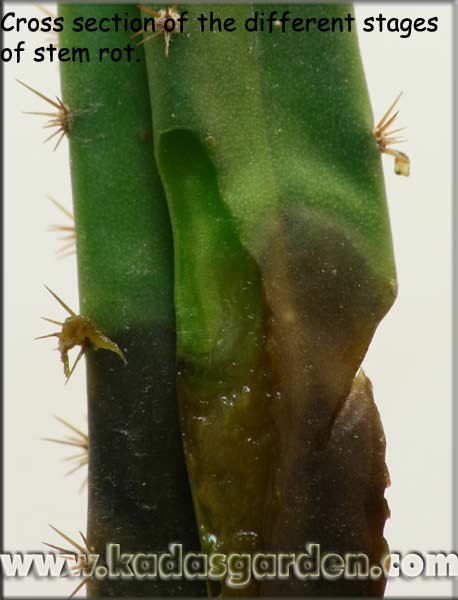
Fig 5. Notice the white area in between the the lower dead and upper healthy tissue. This is where the attack is spreading.
|
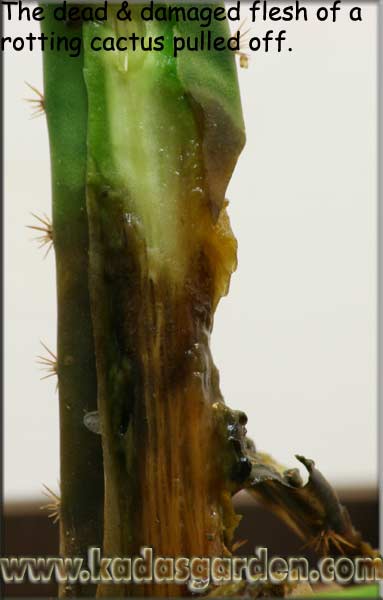
Fig 6. All the cortex is cleared away and you can see clearly that the rot went right through everything including the xylem/phloem.
|
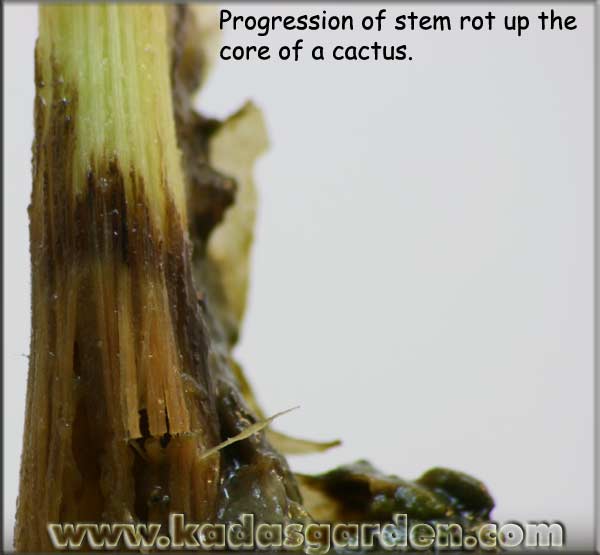
Fig 7. A close up of the battle front.
|
|

Fig. 1. From top to bottom: Healthy tissue, infected tissue with active mycellium growth, dead tissue which often gets infected with secondary fungi.

Fig 2.Secondary fungi growing on the dead tissue left by the primary pathogen which caused the rot.
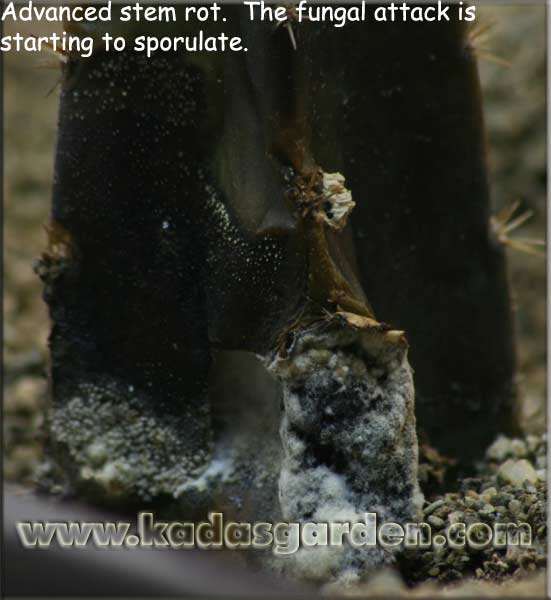
Fig 3. There are 3 types of mold growing on this cactus, after the plant tissue died.

Fig 4. Secondary fungi moving into the cactus.
|
|
Appearance: When grafting, usually within weeks of doing so, sometimes the scion or stock's flesh turns colour to a red then brown and starts to shrivel. Usually when you seed that parts of the scion are "collapsing" and turning brown, this is rot.
Causes: Almost every time this is caused by dirty grafting procedure and possibly too much humidity. When grafting its important to keep the blade super clean with alcohol wipes or similar disinfectant. Same as a human, if you cut yourself with something dirty, it will get infected. Cacti are the same. Sometimes other damaged will cause rot as well. Bumping the cactus or injuring it can cause rot, grafted or not. Too much sun (especially for low light level species and variegated cacti) can cause skin damage which may lead to rot in fresh grafts.
Solutions: If the rot doesnt stop on its own, which it usually does not, try cutting out the rot (CLEAN BLADES!) and dusting with a sulphur powder. If the rot is set in and hits the vascular rings, its probably too late, but not always. If it is just on the outside there is often an 80% of survival, roughly.
Prevention:Using CLEAN blades to graft, wiping between every cut or 2, is your best bet. Keep humidity down (unless the type of graft being done requires high humidity, in which case just try to prevent stagnant air). Do not harm or stress the cactus. Keep it shaded, and protected. It was just cut in half, give it some time.
|
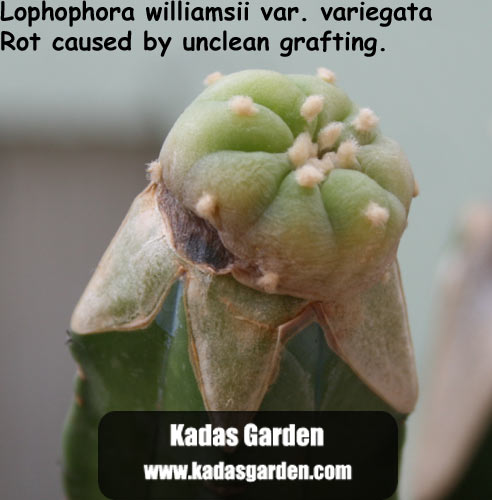
This variegated Lophophora williamsii was not grafted with a clean blade and became infected. Died soon after.
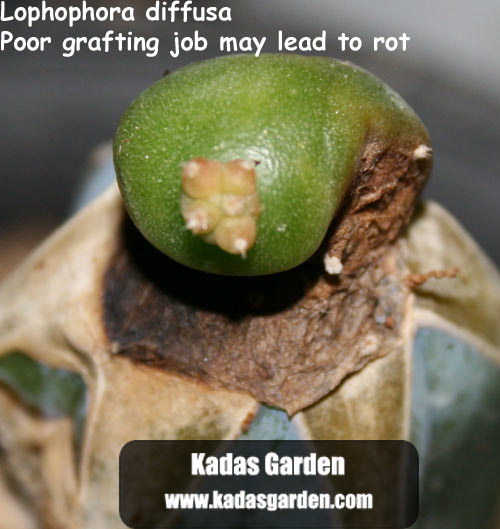
Not all are lost. This Lophophora diffusa lost 80% of its mass, but pupped once more after healing.
|
|
|
Appearance: Root rot can be very hard to tell until its too late. Aside from the roots often appearing dead (hard to tell when a plant is planted!), the stem of the cactus will also start turning a yellow colour and may become softer (your hard cactus is now more succulent feeling). The scary part with root rot is it works up the core of the cactus following the cambium. This causes the cactus to rot from the inside out, which makes it tricky to save. Watch for soft bases of the plants, a yellowing colour that is sort of mixed with green (not to be confused with sunburn) and in severe cases brown bases and squishy further up the plant.
Causes: Usually root rot is caused by too much water. Damaged roots also help root rot set in. Things like broken roots while repotting, not well drained, root bound thus not draining water well, or pests in the soil.
Solutions: If caught very early, which it rarely ever is, stop watering and let stay dry for a good period. Consider repotting into a new clean mix that allows more water drainage. Killing any and all pests. If it is more advanced, than surgery is all that's left. It is not time to save as much cactus as possible, its time to play it safe and cut out lots. If your cactus is 6cm tall and it is rotting 2cm up, cut away 4cm of cactus. You must cut away healthy green flesh to avoid it continuing. ALWAYS use a *clean* blade, wiping with alcohol is our preferred method. Once cut, apply a sulphur powder to prevent further rot. If that is not available, most rooting powders for plants have sulphur in them or similar fungicides that will help prevent any troubles.
Prevention: When repotting, allow plants to dry a few days once out of the old pot before planting in new pot. Add more pumice and coarse sand to the mix, more drainage. Cut back on watering. And make sure there are no bugs or fungus growing inside the pot.
Confused with: The soft tissue could be confused with lack of water as many cacti get softer when not watered much, but the feel is more "squishy" than lack of water. Also the yellow could be confused with too much light as some cacti burn or "bleach" under intense light.
|

A root fungus caused this A. asterias to develop bad root rot. It died soon after.

3/4 of this L. williamsii was cut away and dusted with sulphur powder to prevent death. it took 14 months to root, but is now growing well, 2 years after the incident.
|
|
|



